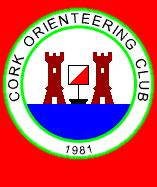
Mary Healy attended a planning course in the UK. Here she reports on the experience ...
A WEEK IN AN ORIENTEERING BOOTCAMP
From the minute we reached the centre, all outside life ceased to exist. Our time was scheduled from dawn to bed. I can only speak for my own course content, as I was too busy to have any chance to check out Niall’s course, other than seeing that he’d made friends. And he made plenty of them. The camaraderie between participants was huge, the philosophy being – ‘We all muck in together and get the job done!’
On my Planners course, as I had expected, every ‘i’ was dotted and every ‘t’ crossed. Nothing was left to your interpretation. Everything was spelt out and no stone left unturned in itemising every detail of a Planner’s role in staging an orienteering event. We were treated to 17 lectures in 4 days, from Monday lunchtime to Friday lunchtime! AND we had practical exercises out in the forest. AND we had Homework (!) every evening. Luckily, we got PowerPoint handouts on everything, so we weren’t on overdrive from note-taking and could just listen and absorb instead.
Lectures were on everything from Technical Difficulty to Choosing Legs and even a whole lecture on Taping! Now, what would you think should be included on Taping? If you thought of it, it’s there, e.g. ‘Do not write in Red on Red tape.’ What’s more, we then did a practical exercise on it! Out we went into the forest, literally on our doorstep, armed with our roll of electrical insulation tape, a map with control sites and instructions to check sites already taped. Another day, we got to tape our own newly planned courses and then – With-A-Different-Colour-Tape – check someone else’s taping.
We even got a lesson on OCAD, the computer program used to draw orienteering maps and courses, in one of four lectures one morning. To be honest, this was about the only weakness of the course. You could give a whole course just on OCAD alone. Half an hour on it just wasn’t enough for people who never experienced it, who were then expected to use it to draw up courses. Most struggled with it. This was the first time OCAD was included on the course. To be fair, they want to give a complete and comprehensive course on Planning, with everything that needs to be covered included in it. It’s up to the participants to go away and work on the content. They could lengthen the course duration, but it’s not realistic to expect people to give more than a week to such a course. So, in retrospect, it is better to have a rushed introduction to OCAD than none at all.
Homework consisted of planning courses and drawing them with control descriptions up beautifully on OCAD. Now, at 5.30 pm, when you’re finished lectures, the last thing you want to do is spend much time on your homework. But each evening after dinner we returned, like dutiful students, to the classroom. Some were quicker than others. Whizz, whizz – courses planned. Others, like me, could be likened to a good whiskey, which improves with time. So we mulled over our courses a lot longer. Hence, by the time we finished, we were leaving at 11-11.30 pm! All hope of a nightcap in the bar was forgotten, as we fell straight into our beds, to recover in time for class at 8.30 next morning. The one time I did succumb to a bit of leisure time before bed, I was up and at my desk at 7.00 am, to get things done!
In a conversation with Colin Dickson, the Course Co-ordinator, an M50 and many times British Champion, he told me that the course centre was chosen for all the necessary onsite facilities it offered – quiet location; permanent orienteering building - with classrooms, computer room with OCAD 9 installed on all seven PCs, toilets, kitchen, equipment room; accommodation dormitories; restaurant providing full board – food was excellent to my mind; bar with TV. We didn’t ever need to leave the place. Although, the last night, we all went to the local pub instead, for a meal out, which was a good social end to a hard week’s work.
So, if any of you are offered the opportunity by the IOA to go on another one of these BAOC courses – Planner or Orienteering Skills – I say “Go for it!” It’s a brilliant opportunity. Top class instructors, who couldn’t do enough for anyone, all necessary facilities provided, packed but excellent course content. Be warned – it’s intense, it’s demanding, but it’s extremely rewarding and well worth doing. Essential, I’d say, if you aspire to being as fully qualified as you can be, to get the job done right.
But don’t forget your sleeping bag, unless you want to sleep under the grey hairy blankets that were provided, like Niall and I had to do, instead of all the snug-looking sleeping bags everyone else knew to bring!
GEN.








